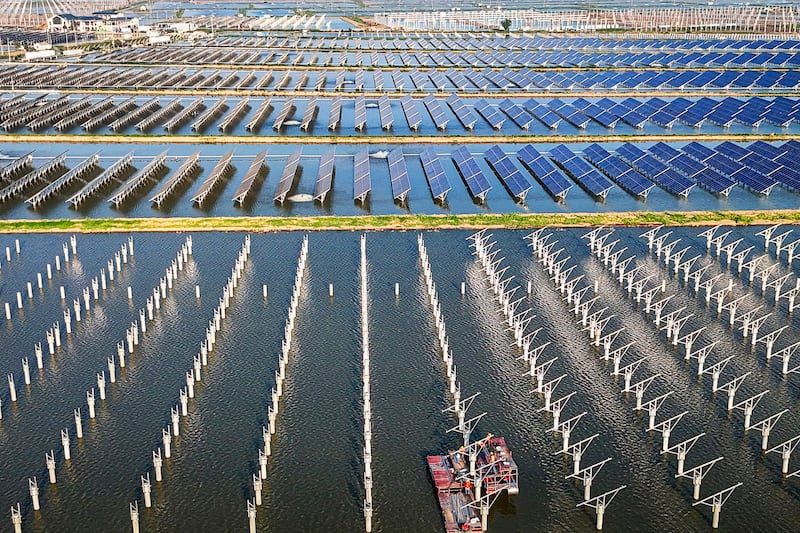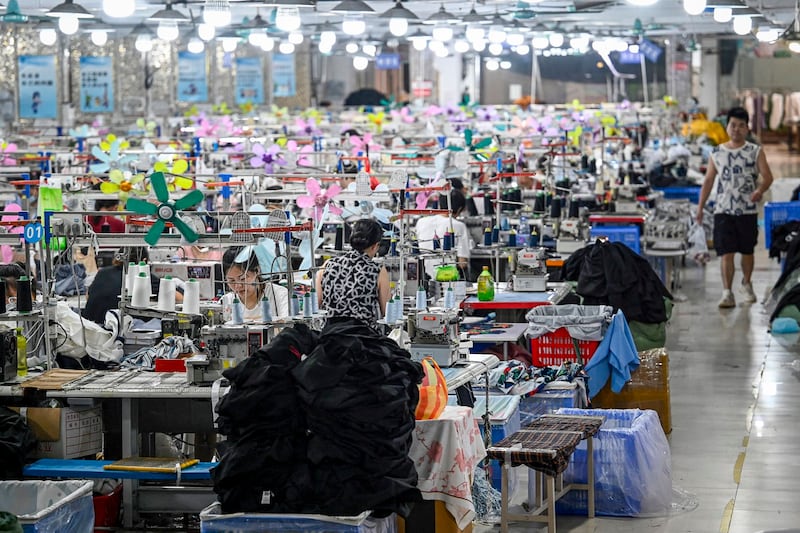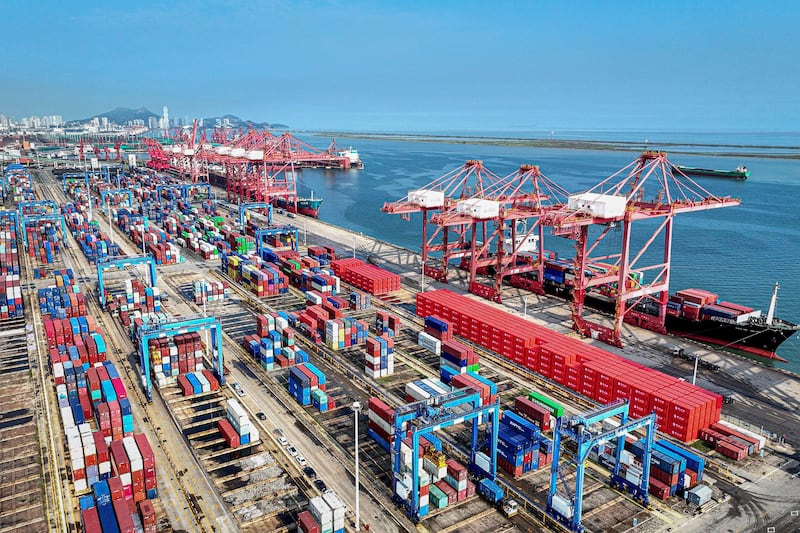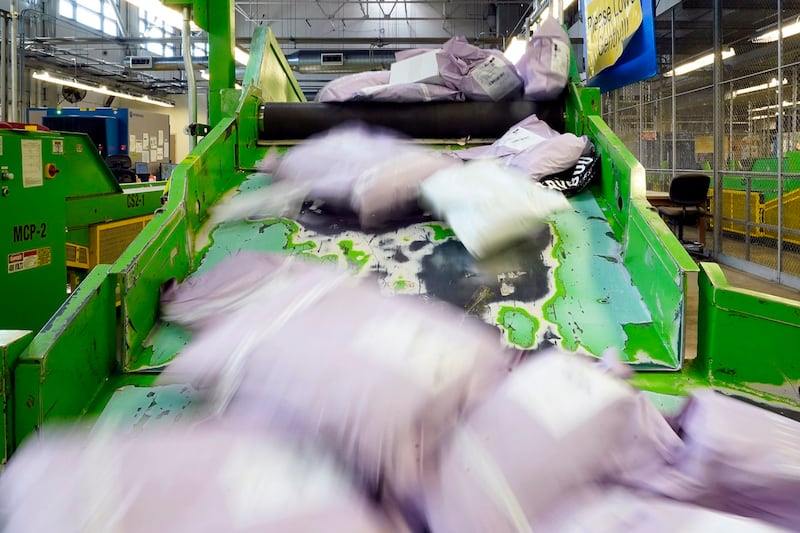Ahead of November’s U.S. presidential election, trade with China has emerged as a major area of policy disagreement between the two main candidates, with potentially dramatic consequences for the American economy depending on who wins the White House.
Vice President Kamala Harris has backed the Biden administration's targeted tariffs on only certain Chinese imports – such as a 100% rate on electric cars and a 50% rate on solar panels – arguing it will bolster domestic manufacturing without causing wider economic damage.
Former President Donald Trump, meanwhile, has proposed an across-the-board rate of "more than" 60% on Chinese imports, and a rate of 10% – or even 20% – on all other imports, in order to revive the U.S. manufacturing sector and reduce reliance on foreign trade.
So how did trade policy become an election issue?
Why do Harris and Trump want tariffs on China?
The bipartisan U.S. consensus in favor of free trade deteriorated in the wake of Trump's first presidential election victory in 2016, which came after he campaigned in favor of protectionist policies and ended up beating Democratic candidate Hillary Clinton in part by winning three northern manufacturing states.
The seeds for the turnaround were planted in the final years of the administration of President Bill Clinton, who pushed Congress to pass a law to allow China greater access to the American economy.

Then in the 2000s, the integration of China into the global trading system, marked by its entry into the World Trade Organization in 2001, led to a period in the United States of what economists call the " China shock," where increased trade reshaped America's economy.
The following years saw a flood of cheap Chinese imports that benefited American consumers through substantially lower prices – but led to the hollowing out of the U.S. manufacturing sector in the northern “Rust Belt” and the disappearance of many jobs.
The loss of the jobs and the perception of unfair trade practices by China created a fertile ground for Trump’s protectionist policies.
Now, as Trump campaigns to return to the White House, he has proposed even more stringent tariffs, which he argues would make Chinese goods uncompetitive against American-made alternatives and finally lead to a resurgence of domestic manufacturing.
Following President Joe Biden’s lead, Harris has also adopted a more protectionist stance than previous Democratic presidential candidates, driven by the need to appeal to voters in the once solidly Democratic manufacturing states who favored Trump in 2016 (but Biden in 2020.)

Ahead of what’s looking like a close election, tariffs on China are seen as a way to address voters’ economic anxieties and protect American jobs while only risking blowback from foreign traders who cannot vote.
However, Trump and Harris’ approaches to tariffs differ significantly.
What is Harris’ policy on tariffs?
Harris’ approach to tariffs reflects a blend of continuity with the Biden administration’s policies and her own campaign’s strategic priorities.
The Democratic candidate has criticized Trump's across-the-board tariff proposals for their broad and indiscriminate nature, and argued they would cost Americans $4,000 a year in increased prices.
But Harris has not rejected the use of tariffs outright. Instead, she has advocated for " targeted and strategic tariffs" that "support workers" in certain cases but otherwise allow free-trade to determine prices.
Adopting Biden's policies, which were announced at a ceremony at the White House in May, Harris has said she supports a quadrupling of tariffs on Chinese electric vehicles to 100% and doubling the duties on semiconductors and solar cells to 50%, among other targeted rates.

That program of targeted tariffs was meant to be locked-in in early August after consultations with American businesses, but the Biden administration has indefinitely put the decision on hold, seemingly in response to the issue becoming a potential election flashpoint.
Harris’ tariff plans also come with a caveat: They are designed to be part of a broader economic policy that includes raising corporate taxes to help pay off the ballooning federal debt while also continuing the Biden administration’s expansive infrastructure spending.
What is Trump’s policy on tariffs?
Trump’s tariff policy is more aggressive and sweeping than that of Harris. Building on his first-term trade policies, Trump has proposed an across-the-board 10-20% tariff on imports from all countries and potentially “more than” 60% tariff on Chinese imports.
These tariffs are intended in part to be punitive, designed to force China to change its trade practices and to reduce the U.S. trade deficit while giving a leg-up to the American manufacturing sector.
Trump’s approach is rooted in a belief that tariffs can protect American industries from foreign competition. He argues that high tariffs will incentivize companies to move their manufacturing back to the United States, thereby restoring jobs that were lost due to globalization.

He has also argued that the revenue from the tariffs could be used to offset the costs of his broader economic agenda, which includes making his 2017 tax cuts permanent. That would avoid the need for the tax increases proposed by Harris, according to his campaign.
Trump’s new proposals also would keep in place the $80 billion in tariffs on Chinese imports he previously imposed in 2018 and 2019, which the Biden-Harris administration has declined to roll back.
What do economists say?
Economists have expressed concerns about both candidates’ plans, though they have highlighted differences in their potential impacts.
Trump's proposed tariffs, particularly his across-the-board 10% or 20% levy on all imports, are viewed as being highly disruptive to the global trading system. Economists at the Peterson Institute for International Economics calculated that the proposed Trump tariffs could cost a middle-earning U.S. household an additional $2,600 per year.
Goldman Sachs Chief Economist Jan Hatzius in July also estimated that Trump's tariffs plan would add 1.1 percentage points to the U.S. inflation rate and reduce GDP growth by half a percentage point.
These impacts would stem from the higher costs of imported goods, which would likely be passed on to consumers, and the potential for an ensuing trade war that could further destabilize global markets.

On the other hand, Harris’ targeted tariffs are viewed as less economically disruptive – but potentially less effective in achieving their stated objectives, given their extremely limited scope.
While the tariffs may help the sectors they target, and hurt American consumers of those sectors – such as by keeping electric-car prices high – they are unlikely to bring about a significant revival in the overall U.S. manufacturing sector, or otherwise lead to higher inflation.
And the imposition of tariffs could still also lead to bad outcomes.
Beijing could, for example, decide to put in place retaliatory tariffs on American exports, or take punitive action against American companies operating in China’s market, in order to highlight its displeasure.
What does China say?
Chinese officials have labeled the proposals as economic “bullying” and have vowed to retaliate if they are implemented.
Foreign Minister Wang Yi in May called U.S. tariff proposals a " typical case of hegemonism" that "borders on madness" accused Washington of having "lost reason in a quest to ensure U.S. unipolar supremacy."
Beijing has also said tariffs could put strains on the U.S.-China relationship and, besides retaliatory tariffs, has floated the idea of China also restricting exports to America of rare critical materials on which it has a near monopoly, harming U.S. industry.
But neither Wang nor other Chinese officials get a vote come Nov. 5 – and for both Harris and Trump, dealing with their complaints would not be the worst problem. At least they’d be in the White House.
Edited by Malcolm Foster.
